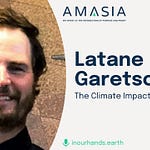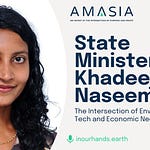In this episode of In Our Hands, Ramanan speaks with architect and urbanist Doug Farr. Farr shares his sustainability journey and the work of firm, Farr Associates.
They delve into Farr’s involvement in movement-building initiatives, the significance of community engagement and individual agency in driving change, and his book "Sustainable Nation," which focuses on urban design patterns and the need for climate action accelerants.
Full transcript available by clicking above. This episode is also available on Apple Podcasts and Spotify.
In Our Hands is a production of Amasia. Follow these links for more about our firm, the Amasia blog, our climate fiction podcast, and Ramanan’s blog.
Highlights
[00:01:43] Doug's Background And Interest In Sustainability
[00:10:40] Sustainable Nation And Its Purpose
[00:13:09] The Search For Trends In Society And Their Timeframes
[00:18:33] Creation Of The Climate Action Museum To Inspire Action
[00:25:07] Focus On Tangible Actions That Bring Joy And Happiness
[00:27:20] Approaching Projects With Future Energy Standards In Mind
[00:29:42] The Importance Of Balancing Science And Community In Climate Action












